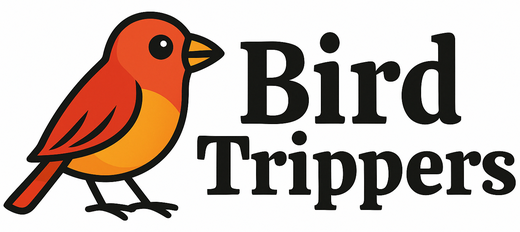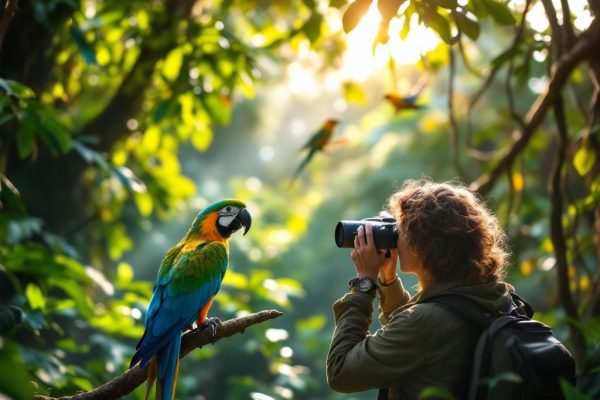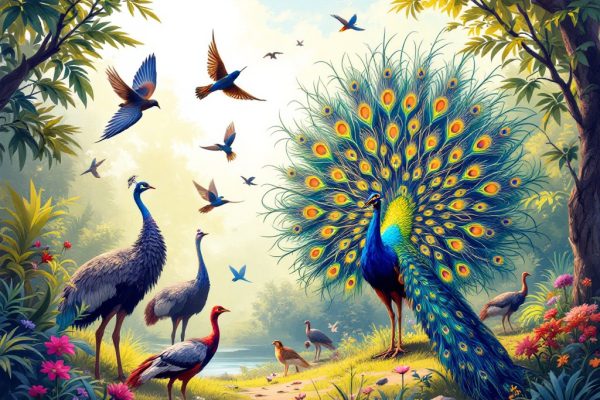Fun Facts About Parrots: Do You Know These Talkative Animals
Unlock the secrets of the remarkably intelligent parrot! From the tool-using Kea to the mimicking abilities of African Greys, these inquisitive creatures possess incredible cognitive skills. Discover how their vocal learning, problem-solving, and complex social interactions set them apart. Explore the fascinating world of parrots and learn how to enrich their lives, ensuring their well-being and unlocking their full potential. Delve into this captivating article to unveil the wonders of these intelligent companions.
Important information

- Parrots are highly intelligent, using tools, solving problems, and showing complex social interactions.
- They are excellent vocal mimics, learning human speech and other sounds, though they don’t always understand the meaning.
- Parrots have long lifespans, especially in captivity, with some living for 50 years or more.
- Budgerigars can learn an impressive vocabulary of up to 2,000 words.
- A parrot’s “talking” ability depends on species, individual personality, and training.
Intriguing World of Parrots: Intelligent and Inquisitive Creatures
Parrots are renowned for their intelligence and curiosity. Their cognitive abilities allow them to learn, adapt, and even solve complex problems. A prime example is the Kea parrot, known for its exceptional intelligence, tool use, and intricate social interactions. These birds cleverly manipulate objects to obtain food and even collaborate to overcome challenges, demonstrating remarkable problem-solving skills. Beyond their impressive intellect, parrots also possess incredible vocal learning abilities, mimicking human speech and other sounds. To thrive, these intelligent creatures require mental stimulation and enrichment, which are essential for preventing boredom and ensuring their overall well-being.
What Makes Parrots Intelligent Birds?
Parrots are remarkably intelligent creatures, capable of mimicking sounds, including human speech. This advanced vocal learning ability is just one aspect of their intelligence. They also demonstrate higher cognitive function by using tools to solve problems and obtain food. Furthermore, their complex social interactions within their flocks provide further evidence of their impressive mental capabilities. These fascinating birds continue to intrigue researchers with their cleverness. Here’s a closer look at their intelligence:
- Vocal Learning: parrots can mimic a wide range of sounds, from human speech to environmental noises.
- Problem-Solving: they use tools like sticks and stones to access hard-to-reach food.
- Social Interactions: parrots engage in complex social behaviors within their flocks, demonstrating advanced communication and cooperation.
Exploring Parrot Curiosity and Behavior
Parrots are inherently curious creatures that actively explore their surroundings, engaging with a variety of objects. This inquisitive nature is crucial for their learning and adaptation, allowing them to understand their environment. Playful by design, these birds readily investigate new situations and stimuli, further enhancing their adaptability. Their remarkably dexterous feet, used like hands, enable them to skillfully manipulate food. Often forming deep, lifelong partnerships, parrots, much like humans, can experience separation due to death or breeding challenges. These intelligent birds lead complex social lives, highlighting their emotional depth.
Fun Facts and Unique Characteristics of Parrots
Parrots are renowned for their remarkable longevity. They often live 35 to 50 years in captivity, and some even reach 80, making them exceptional, lifelong companions. While the phrase “pandemonium of parrots” evokes an image of delightful chaos, it’s not an official term. “Pandemonium” simply means noisy disorder. A group of parrots is correctly called a “flock.” So, while a flock can certainly be boisterous, it’s not technically a pandemonium.
How Long Do Parrots Live?
Parrots, especially those in captivity, can live remarkably long lives, although their lifespan varies greatly depending on the species and the quality of care. Large parrots like Macaws and Amazons usually live 30 to 50 years, and some even live past this age. Cookie, a Major Mitchell’s cockatoo, lived to be 83 years old. Smaller parrots, such as budgerigars, tend to have shorter lifespans, often living for only 5 to 10 years. A parrot’s longevity depends on several key factors:
- diet,
- living conditions,
- the care provided.
Proper care is essential for a long and healthy life.
What Is a Pandemonium of Parrots?
A “pandemonium” aptly describes a group of parrots, perfectly capturing their boisterous and sociable nature. These vibrant birds are known for their noisy gatherings. Other terms like “flock” or “company” can also be used. While “company” emphasizes their colorful plumage, “pandemonium” truly embodies their energetic and sometimes chaotic presence.
Unique Abilities of Parrots: Tools, Speech, and More
Parrots are renowned for their mimicry, but their abilities extend far beyond simple imitation. These intelligent birds are adept problem-solvers, using tools to access food and demonstrating complex vocal learning that surpasses mere repetition. Such skills highlight their advanced cognitive abilities, setting them apart from other avian species. Research indicates parrots may even grasp the meaning of their words, connecting phrases to specific events and showcasing observational learning. For instance, a parrot might greet someone entering a room with “How are you?”, mirroring human social interaction. This remarkable intelligence makes parrots truly fascinating creatures.
Parrots Singing and Talking: The Musical Side
Parrots possess a unique way of producing sounds. Lacking vocal cords, they skillfully manipulate airflow within their trachea using throat muscles. This intricate mechanism enables them to mimic a diverse array of sounds, ranging from human speech and musical melodies to their distinctive calls, whistles, and clicks employed for communication. While these adept mimics learn to associate phrases with specific situations through observation and repetition, they do not comprehend the meaning of the words they imitate.
The Art of Parrot Speech: Mimicry and Imitation
Parrots are renowned for their mimicry, using a specialized organ called the syrinx to imitate various sounds, including human speech. While they can readily repeat words and phrases, they don’t always grasp the meaning. This mimicry is a primary communication method, stemming from social interaction within their flocks.Some species, like African Greys, exhibit a deeper understanding of language. Alex, a famous African Grey, learned roughly 100 words and could differentiate objects by size and shape. This ability to mimic is essential to parrot behavior, enabling communication and demonstrating intelligence.A parrot’s mimicking prowess varies considerably. Budgies, for example, can learn an astounding 2,000 words. A talking parrot’s vocabulary can even spread within wild flocks, showcasing their impressive observational learning.
Understanding Parrot Vocalization and Speech
Parrots are remarkable mimics, adept at associating sounds with situations. They learn to use phrases appropriately, such as greeting someone with “hello”. They do it not by understanding the word’s meaning, but by connecting the sound to the event. While they expertly replicate human speech, they don’t truly grasp the concepts behind the words they’re using. Their skill lies in mimicking, not comprehending.
How Do Parrots Mimic Human Speech?
Parrots don’t have vocal cords, but they possess a unique organ called a syrinx located at the base of their trachea. This syrinx allows them to mimic human speech by skillfully controlling airflow and manipulating its muscles, producing a diverse range of sounds. Learning occurs through repetition, associating sounds with actions or reactions. Social interaction also significantly enhances their mimicry abilities.
Can Parrots Hold Basic Conversations?
Parrots are renowned for their exceptional communication skills, with some species capable of engaging in simple conversations. They don’t merely mimic sounds; they participate in actual dialogues, responding to questions and prompts in contextually appropriate ways. For instance, an African Grey might ask for a specific treat, demonstrating an understanding of both the desired item and the concept of making a request. This remarkable ability showcases their impressive cognitive capacity.
Parrot Vocabulary: From Budgies to Talking Parrots
Budgerigars possess an impressive vocabulary, capable of learning up to 2,000 words, a remarkable feat among parrots. Talking parrots are easily recognized by their ability to mimic human speech, using distinct words and phrases.
African Greys and Amazons are particularly known for this talent, often engaging in conversations and responding to questions.
However, a parrot’s talkativeness isn’t guaranteed. Individual personality and training greatly influence their speaking ability.
- some parrots learn quickly,
- others, even within the same species, may remain silent.
Training techniques play a crucial role in developing a parrot’s verbal skills.
What Is the Vocabulary Range of Budgerigars?
Budgerigars are incredibly intelligent birds, capable of learning a surprising number of words—some even master over 2,000. This demonstrates their remarkable communication skills. Other parrot species also possess impressive vocabularies, including:
- african greys,
- amazons,
- eclectus,
- quakers.
These birds showcase their intelligence and ability to connect with humans through language.
Identifying a Talking Parrot
Looking for a talkative parrot? Pay attention to how clearly they mimic human speech. Do they seem to participate in conversations or react to cues? African Greys and Amazons are known for their speaking skills. However, each bird has a unique personality, and their individual character and training greatly affect their chattiness. Some are naturally talkative, while others are quieter. Observing their interactions and vocalizations will help you discover if you’ve found a truly conversational companion.

















